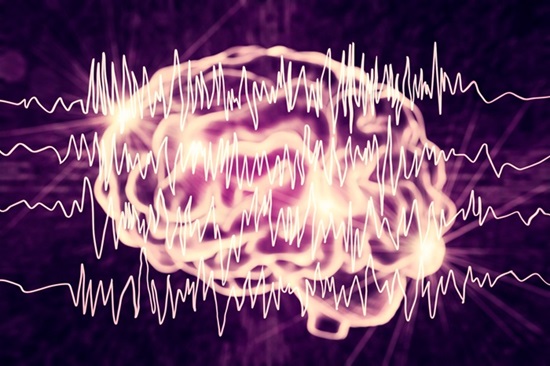New Method Combines EEG, MRI, and ML to Identify Seizure-Prone Brain Regions Before Surgery
|
By HospiMedica International staff writers Posted on 29 Aug 2024 |

Neurosurgery for patients with drug-resistant epilepsy involves locating the brain regions responsible for seizures. Generally, this requires patients to undergo 7 to 10 days of invasive intracranial EEG monitoring, where electrodes are implanted inside the brain through skull openings to record seizure activity. Researchers have now introduced a shorter, noninvasive technique for mapping seizure zones, which offers insights beyond what traditional EEGs can provide. Detailed in the journal Epilepsia, this novel method integrates standard scalp EEG readings with MRI data to map brain structures and employs machine learning to identify the brain areas most likely to generate seizures.
The team at Boston Children’s Hospital (Boston, MA, USA) conducted a retrospective analysis using approximately five minutes of scalp EEG data from 50 patients with drug-resistant epilepsy who had undergone neurosurgery. By incorporating MRI data and applying machine learning algorithms, they defined functional cortical networks, capable of detecting epileptiform activity not visible to the naked eye and even in the absence of discernible brain abnormalities on MRI. The algorithm showed a 75% accuracy rate (91% sensitivity, 74% specificity) in pinpointing seizure zones during episodes of epileptiform activity and 62% accuracy during non-epileptiform periods. The algorithm was less likely to match the targeted zones in patients who continued to experience seizures post-surgery, implying the initial surgical intervention did not accurately target the epileptic focus.
In cases where surgery did not stop the seizures, the model suggested that not all epileptogenic regions had been removed. It also pointed out scenarios where the epileptic area might be too extensive for resection, suggesting that such patients might better benefit from palliative treatments like neuromodulation. The researchers aim to further validate their approach in a larger, prospective study and determine which patients with drug-resistant epilepsy could most benefit from surgical interventions. Given its brief and noninvasive nature, this new technique could be applied earlier in the disease process, potentially allowing for earlier surgical interventions and helping to mitigate the neurodevelopmental impacts of epilepsy.
“Using computational tools, we can reconstruct cortical activity that the eye cannot catch and understand how different regions are functionally connected,” said Eleonora Tamilia, PhD, who directs the Epilepsy Monitoring Unit Signal and Data Science Program within the Epilepsy Center at Boston Children’s Hospital. “If a seizure starts in one region of the cortex, it’s likely to spread to another network it connects to. Even regions that are far apart may fire together.”
Related Links:
Boston Children’s Hospital
Latest AI News
Channels
Critical Care
view channel
Ingestible Smart Capsule for Chemical Sensing in the Gut Moves Closer to Market
Intestinal gases are associated with several health conditions, including colon cancer, irritable bowel syndrome, and inflammatory bowel disease, and they have the potential to serve as crucial biomarkers... Read moreNovel Cannula Delivery System Enables Targeted Delivery of Imaging Agents and Drugs
Multiphoton microscopy has become an invaluable tool in neuroscience, allowing researchers to observe brain activity in real time with high-resolution imaging. A crucial aspect of many multiphoton microscopy... Read more
Novel Intrabronchial Method Delivers Cell Therapies in Critically Ill Patients on External Lung Support
Until now, administering cell therapies to patients on extracorporeal membrane oxygenation (ECMO)—a life-support system typically used for severe lung failure—has been nearly impossible.... Read morePatient Care
view channel
Portable Biosensor Platform to Reduce Hospital-Acquired Infections
Approximately 4 million patients in the European Union acquire healthcare-associated infections (HAIs) or nosocomial infections each year, with around 37,000 deaths directly resulting from these infections,... Read moreFirst-Of-Its-Kind Portable Germicidal Light Technology Disinfects High-Touch Clinical Surfaces in Seconds
Reducing healthcare-acquired infections (HAIs) remains a pressing issue within global healthcare systems. In the United States alone, 1.7 million patients contract HAIs annually, leading to approximately... Read more
Surgical Capacity Optimization Solution Helps Hospitals Boost OR Utilization
An innovative solution has the capability to transform surgical capacity utilization by targeting the root cause of surgical block time inefficiencies. Fujitsu Limited’s (Tokyo, Japan) Surgical Capacity... Read more
Game-Changing Innovation in Surgical Instrument Sterilization Significantly Improves OR Throughput
A groundbreaking innovation enables hospitals to significantly improve instrument processing time and throughput in operating rooms (ORs) and sterile processing departments. Turbett Surgical, Inc.... Read moreHealth IT
view channel
Printable Molecule-Selective Nanoparticles Enable Mass Production of Wearable Biosensors
The future of medicine is likely to focus on the personalization of healthcare—understanding exactly what an individual requires and delivering the appropriate combination of nutrients, metabolites, and... Read more
Smartwatches Could Detect Congestive Heart Failure
Diagnosing congestive heart failure (CHF) typically requires expensive and time-consuming imaging techniques like echocardiography, also known as cardiac ultrasound. Previously, detecting CHF by analyzing... Read moreBusiness
view channel
Expanded Collaboration to Transform OR Technology Through AI and Automation
The expansion of an existing collaboration between three leading companies aims to develop artificial intelligence (AI)-driven solutions for smart operating rooms with sophisticated monitoring and automation.... Read more
















